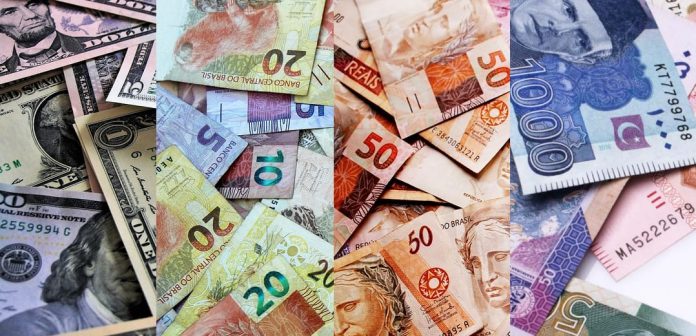De-dollarization is pacing up.
The movement towards de-dollarisation is by no means confined to Russia and China alone. Rather, it is a global trend, with nations and regions from India to Argentina, Brazil to South Africa, and the Middle East to Southeast Asia all redoubling their efforts to reduce their reliance on the dollar as countries seek to protect their economic interests and safeguard against potential future threats.
From the collapse of the Bretton Woods system to the launch of the euro by the European Union in 1999, and from the aftermath of the 2008-2009 financial crisis to the present day, questions about the dollar’s weakening hold on the global economy have persisted.
Today, the world’s central banks fell below 59 percent of their foreign exchange reserves in dollars in the final quarter of last year – a decline from around 70 percent in 2000 – depicting the simmering trend towards de-dollarization. During the same period, the euro has registered only a modest increase in its share of global reserves, rising from 18 percent to just under 20 percent today.
In contrast, the Chinese renminbi (RMB/yuan), despite accounting for less than 3 percent of the world’s reserve currency holdings, has been showing very rapid growth since 2016. In the first quarter this year, Chinese RMB held by various central banks as foreign exchange reserves reaches the highest level since it was first included in the IMF’s special drawing rights basket in Q4 2016 and representing 2.45 percent of the total, as per the International Monetary Fund.
The dollar’s value has fluctuated significantly in recent years, with the currency currently standing at over 10 percent higher than its value at the start of the Ukraine conflict in February 2022, and a whopping 30 percent higher than a decade ago.
The rapid appreciation of the dollar in recent years has had far-reaching implications for countries around the world. One significant impact has been on dollar-denominated debt, which has become considerably more expensive to repay as the currency has surged in value.
In the quest for financial independence, many smaller economies have grown increasingly wary of their exposure to dollar-denominated debt. This, coupled with a push to strengthen regional trade ties, has spurred many countries to seek alternatives to the dollar. The rise in the dollar’s value has also translated into a sharp increase in import bills for essential commodities such as fuel and food. This has been a particular concern for nations that rely heavily on imports from other countries, as the cost of these goods can quickly become prohibitive in the face of a strong dollar. As such, the move towards de-dollarisation can be seen as a way for these countries to mitigate against the potentially devastating effects of currency fluctuations and rising import costs.
Egypt provides a compelling example of the challenges faced by countries burdened by dollar-denominated debt. In recent years, the country has been forced to take on ever-increasing levels of borrowing in order to stabilize its economy and prop up the value of its currency, the Egyptian pound. However, this strategy has come at a significant cost, with the country’s sovereign debt soaring by a factor of four over the past decade. Much of this debt has been denominated in dollars, exposing Egyptians to the vagaries of the global economy and making it increasingly difficult to maintain their standard of living. Egypt is being pushed to the brink as it struggles to manage its soaring dollar-denominated debt and the skyrocketing cost of borrowing. With the Egyptian pound at risk of losing its purchasing power and the threat of a sovereign debt crisis looming, the government is under pressure to explore alternative funding sources to avoid economic destabilization and political unrest.
The challenges faced by Egypt are emblematic of the broader challenges faced by many countries around the world, as they seek to navigate an increasingly complex and interconnected economic landscape. Same is the case with Pakistan and many other countries who are being excessively burdened because their currencies are pegged with the US dollars.
As nations grapple with the impact of sanctions, shifting trade patterns, and volatile currency markets, the move towards de-dollarisation represents a critical response to these challenges, offering a way to safeguard against the uncertainties of the global economy and chart a course towards greater stability and prosperity.


